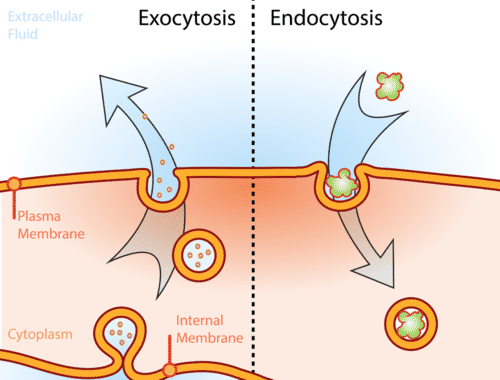Active Transport Active transport is the energy-demanding transfer of a substance across a cell membrane against its concentration gradient, i.e., from lower concentration to higher concentration. Special proteins within the cell membrane act as specific protein ‘carriers’. The energy for active transport comes from ATP generated by respiration (in mitochondria).
Major examples of Active Transport
1. Re-absorption of glucose, amino acids and salts by the proximal convoluted tubule of the nephron in the kidney.
2. Sodium/potassium pump in cell membranes (especially nerve cells).
Endocytosis / Exocytosis
Pinocytosis (‘cell drinking’) This is the uptake of large molecules (DNA, protein) from solution, by a form of endocytosis – the vesicles formed are minute and short-lived.
Phagocytosis (‘cell eating’) This is the uptake of solid particles by a cell e.g. Amoeba feeding, phagocytes engulfing bacteria

No comments:
Post a Comment